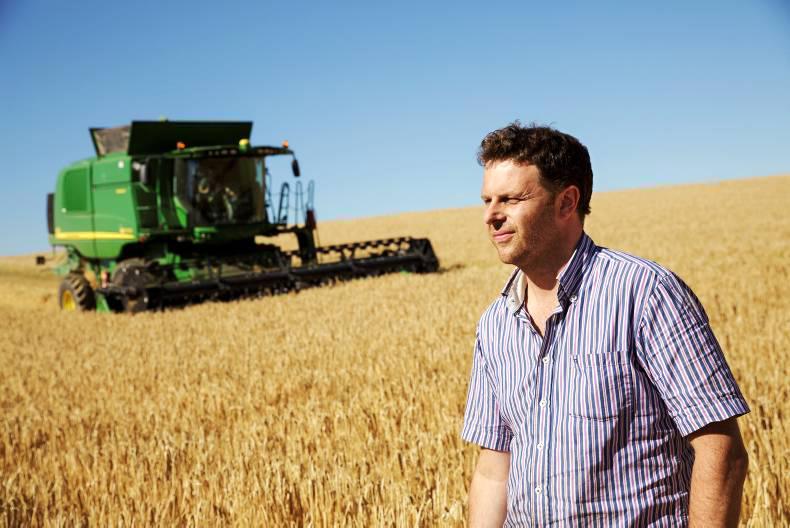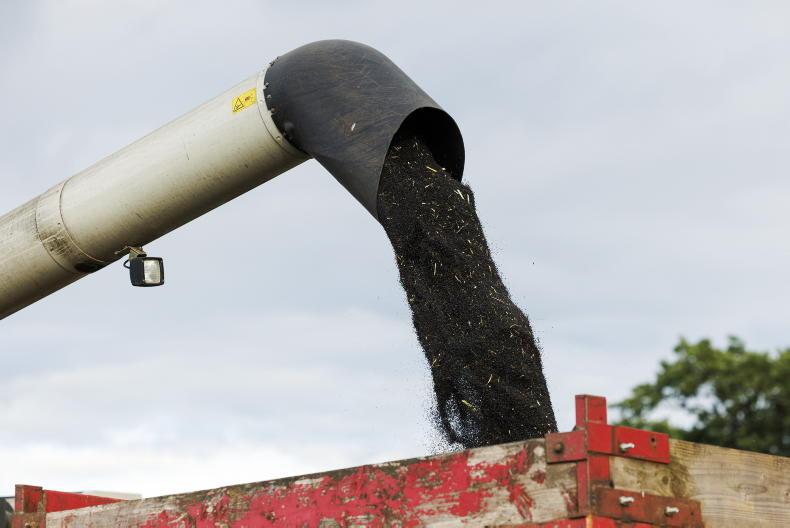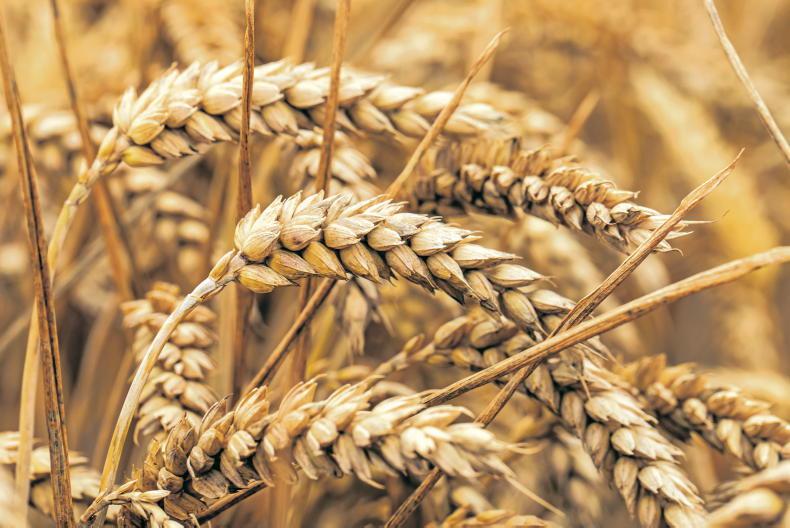The excellent weather has allowed significant progress to be made in harvesting winter crops, particularly in the south.
Unfortunately, yields are disappointing, as fears that the cold spring would affect yield are being realised in early harvesting.
Farmers are hoping that their later-ripening crops are of higher quality, and there is cause for optimism. Poorer crops often burn in and ripen quickly, so what follows 10 days behind can be markedly better, in terms of yield and quality.
For all that, there is little doubt that 2016 is shaping up to be a defining year for tillage farming. In the absence of an adequate response to what is an ongoing income crisis, farmers will walk away.
Cereal plantings were down by 6,500ha this year, and the drift will continue, and soon threaten the viability of a sector that only accounts for 300,000 ha of the more than 4m ha of farmland – less than 10%.
“It’s too quiet,” says John Bailey, a Wexford tillage farmer. He’s right. Grain prices are poor, and the prospect for the 2016 harvest has been getting steadily gloomier all year.
Right now, a perfect storm is looming – poor yields in Ireland, but a good global crop meaning that prices ignore the local drop in supply and stay on the floor. Grain farmers face the prospect of crippling losses if that comes to pass.
They have little in reserve to cope with a bad year – the last three harvests have left little money behind them. Hence the comment by John Bailey.
Below-cost prices in the dairy sector have seen two emergency stimulus packages put in place by the European Commission.
Political pressure has seen all livestock sectors potentially shoehorned on to the 2016 version, but tillage farmers are excluded. There is a crisis, but no response.
Much frustration and anger was on display at an IFA grain meeting in Cork last week. The sense that tillage farming is the forgotten child of the farming family was expressed. Both the IFA and the media were apportioned blame for not fully reflecting the state for the crisis in the sector.
It may in part be a simple numbers game. There are over 120,000 thousand farmers with herd numbers, but only a couple of thousand of serious tillage farmers. Over half of IFA’s 29 county chairs are dairy farmers, only three are predominantly tillage farmers (Wicklow’s Tom Short, Cork Central’s Billy Cotter and perhaps surprisingly, John Hanley from Roscommon).
All-Irish beef ration
There is no easy solution to the problems of the tillage sector but some simple steps could at least put a firmer floor on prices. One such initiative is that of encouraging livestock farmers to use native grain in their feed rations.
On Tuesday, Minister Michael Creed assisted in the launch of an all-Irish beef ration. A simple mix of equal parts rolled barley, wheat and oats (26.5% each), plus 20% beans/peas was on display. No imported filler products were included, or are required. The ration has a protein content of 16% and an energy content of 13MJ/kg.
The IFA will not be selling such a ration, according to IFA grain chair Liam Dunne.
“We’re not in the business of selling, but we are strongly promoting the use of such a formulation,” he said.
“We have the support of Alltech and the involvement of Gerry Giggins in this project. Ireland is promoting the Origin Green food island concept, so it makes absolute sense to use all-Irish feed to supplement our grass-based meat and milk production.”
Dunne said the minister, for his part, endorsed the concept fully at Tuesday’s IFA executive council meeting.
“He said that if he had his way, all Irish livestock would be reared on all-Irish ration.”
The sample ration has come from John Bailey’s farm. John’s brother Bob fattens beef cattle on it, and John hopes that the message will spread.
Liam Dunne’s warning was clear: “If dairy, beef, pig, poultry and sheep farmers don’t use Irish rations now, they soon won’t be able to.”
The IFA has been promoting direct farm-to-farm trade for a few years. One man who practises what he preaches is Cork grain rep James Hegarty. He was cutting Tower winter barley in Glantane, just west of Mallow in Cork on Tuesday. The crop was yielding a disappointing 8.8t/ha (3.5t/acre), bushelling 62-63, with moistures in the 16-18% bracket.
“I’m putting the poorer crop down in part to soil structure not having fully recovered from a potato crop two years ago,” he explained.
“In addition, the wet winter and cold spring challenged crops. Any field that didn’t get some early nitrogen in February seems to be paying a heavy price.”
He is hopeful for his later ripening crops. Based in Whitechurch, near Cork city, the Hegarty family takes land further north, and sells where possible to farmers.
“We are selling grain to farmers, and contract growing maize and fodder beet,” he said. “There is at least some profit built into the contracted prices, so it provides assurances for both sides.”
Following Thursday’s marathon meeting in Cork, IFA president Joe Healy met with Cork tillage farmer representatives over the weekend. He is pointing to some progress. Along with the Irish grain project, there is work being done to ensure that IGAS grain assurance inspections will be accepted as a Bord Bia-grade quality assurance scheme.
TAMS is opening for grain farmers soon, although the complaint is that matching funds for capital investment will be impossible for farmers to deliver in the current climate. The Knowledge Transfer programme includes the tillage sector. Yet, the biggest challenge is price.
While the IFA was discussing grain prices, Glanbia’s latest spot price of €116/t for barley was hitting farmers’ phones. Dunne believes that nothing less than last year’s price is acceptable as a minimum.
“This sample ration is costed at €200/t, at last year’s prices, and that’s surely not too much to ask,” he said.










SHARING OPTIONS